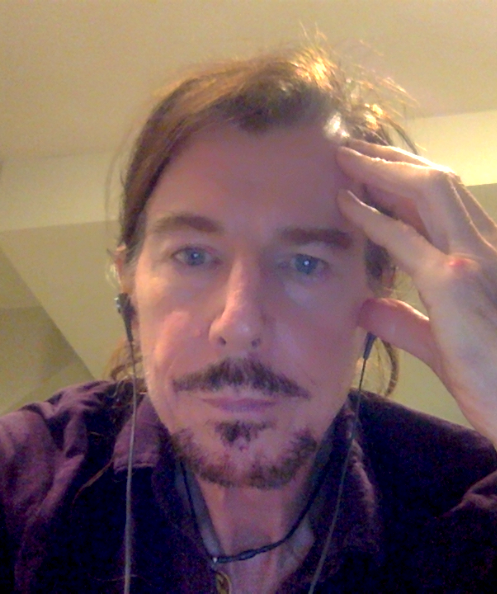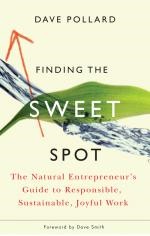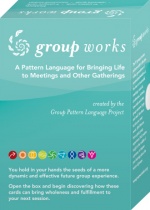 Diana Leafe Christian’s book Creating a Life Together lays out in painstaking detail the process to create an Intentional Community. She is unapologetic about airing the dirty laundry of the 90% of Intentional Communities that have failed, because these are the lessons that must be learned if the next generation of communities is to succeed. “This”, says Patch Adams in the book’s preface, “is the work for political activists who want to live their solutions.” If we want to change the world, we need to Be the Change, and create the model that others can look at and say “See, it works! There is a better way to live!”. Diana Leafe Christian’s book Creating a Life Together lays out in painstaking detail the process to create an Intentional Community. She is unapologetic about airing the dirty laundry of the 90% of Intentional Communities that have failed, because these are the lessons that must be learned if the next generation of communities is to succeed. “This”, says Patch Adams in the book’s preface, “is the work for political activists who want to live their solutions.” If we want to change the world, we need to Be the Change, and create the model that others can look at and say “See, it works! There is a better way to live!”.
As a business adviser who has helped many entrepreneurs plan out and start up their companies, I tend to take a lot of the advice in the book for granted, and forget that most people have never learned about the different legal forms of ownership and enterprise, and about enterprise finance. Intentional Communities are essentially Natural Enterprises, and just about all the advice in my book resonates with Diana’s advice. The book is extremely pragmatic, perhaps a little too much so for us idealists. I am a believer in self-selection and self-management of enterprises, allowing people to find each other, opt in and opt out as the enterprise or community evolves in ways they like or don’t like. Diana’s book is address to founders, and assumes that someone will be ‘in charge’ of the community. And while the book carefully lays out the principles of consensus governance, it warns that such governance isn’t right for every community, and unless done properly ‘structural conflict’ can be the community’s undoing. Here’s the process outlined in the book, in a nutshell:
Wisely, the decision on buying land is near the end of the process (in most failed Intentional Communities it’s done too soon and using unobjective criteria). The section of the book on Vision is especially good, and again, it’s sound advice for any enterprise: Make it clear, goal-oriented, inspiring, make sure it doesn’t create false or unreasonable expectations, and above all, make sure it’s a collaborative vision, one that all members take ownership of and buy into. The book has a number of exercises to teach members how to craft a vision document. These exercises ‘bring out’ the wallflowers in the group, clarify in each member’s mind their expectations and ambitions, ‘out’ unreasonable demands and bullies, and surface hidden expectations. One interesting exercise has each member identify “things, situations and systems that must be or must not be present” in order for them to go forward as a member of the community — a brilliant and innovative process to level-set and clarify expectations. Another exercise, ascribed to process consultant Rob Sandelin, called Where Do We Draw the Line, has each member use red dots on a large easel to define minimum acceptable and ideal standards and values for the community on matters as diverse as what foods will be raised and eaten, the use of automobiles in the community, and moral and aesthetic standards. The exercise quickly shows where there is, and is not, consensus, and which members are going to be uncomfortable with the group’s consensus. There’s an interesting discussion on privacy. It turns out most people’s initial concerns about not having enough privacy in an Intentional Community is unwarranted. “It’s much easier to get solitude in the midst of community than to get community in the midst of solitude”, notes Tom Moench, a member of one community. When people opt out, it’s more likely to be over personality incompatibilities, unmet or changed expectations, or financial, power or principle disputes — the same problems that cause many marriages to fail. The shocker to me was the size of successful Intentional Communities. In a survey by the author, successful communities envisioned an average of 50 members in the community, and had an average of 25 participants in early meetings prior to formation. But the median actual number of members is only eleven. an average density of only one person per eight acres of community land! Diana is only interested in establishing how many members a successful community needs, so she doesn’t answer the question of why so few successful communities have a substantial number of members. With more practice, as we start to overcome the zoning and other hassles that interfere with Intentional Community formation, and as the Internet and other social networking capabilities allow us to find like minds more easily, will this median size grow closer to the theoretical maximal community size of 150? And is our primeval need for physical and psychological space, and proximity to nature, behind the low density of successful Intentional Communities — historically hunter-gather communities averaged only one person per hectare (2.5 acres)? The only thing that disappointed me about the book is the fact it doesn’t mention something that I think is critical to the cohesion and evolution of successful natural enterprises of all kinds: Love. The word isn’t mentioned at all, even in the context of creating community ‘glue’. I believe you need to love the members of your community. Diana believes you need to be hard-nosed, realistic and unemotional in (co-)creating and (co-)managing communities, and she’s right, but that doesn’t mean you have to, or even should, suck the passion out of the venture. When you love each other, you can sustain more adversity, you exercise more patience, you compromise more, you find consensus more easily, you trust each other more, and the whole enterprise is more fulfilling, more fun. I think love is instinctive, more than emotional — there’s something in us that allows us intuitively, if we trust that intuition, to know who we want to make a living with, and how to do it. The book sidesteps issues of human morality other than ecological issues such as veganism and sustainable living processes. Just as in marriage, however, moral issues, differences and lifestyles are a big issue. In the 1960s, a lot of communes collapsed because of differences over monogomy vs. polyamory philosophy, over the acceptability of nudity and public displays of affection (especially in front of children), and over ‘it takes a village to raise a child’ issues of responsibility for others in the community. The book presupposes the continued existence of monogamous relationships and personal property, and there are many Intentional Communities for which these are critical, contentious issues. But on the whole this is a thorough, brave and valuable handbook for creating Intentional Communities. Another addition to my How to Save the World reading list. |
Navigation
Collapsniks
Albert Bates (US)
Andrew Nikiforuk (CA)
Brutus (US)
Carolyn Baker (US)*
Catherine Ingram (US)
Chris Hedges (US)
Dahr Jamail (US)
Dean Spillane-Walker (US)*
Derrick Jensen (US)
Dougald & Paul (IE/SE)*
Erik Michaels (US)
Gail Tverberg (US)
Guy McPherson (US)
Honest Sorcerer
Janaia & Robin (US)*
Jem Bendell (UK)
Mari Werner
Michael Dowd (US)*
Nate Hagens (US)
Paul Heft (US)*
Post Carbon Inst. (US)
Resilience (US)
Richard Heinberg (US)
Robert Jensen (US)
Roy Scranton (US)
Sam Mitchell (US)
Tim Morgan (UK)
Tim Watkins (UK)
Umair Haque (UK)
William Rees (CA)
XrayMike (AU)
Radical Non-Duality
Tony Parsons
Jim Newman
Tim Cliss
Andreas Müller
Kenneth Madden
Emerson Lim
Nancy Neithercut
Rosemarijn Roes
Frank McCaughey
Clare Cherikoff
Ere Parek, Izzy Cloke, Zabi AmaniEssential Reading
Archive by Category
My Bio, Contact Info, Signature Posts
About the Author (2023)
My Circles
E-mail me
--- My Best 200 Posts, 2003-22 by category, from newest to oldest ---
Collapse Watch:
Hope — On the Balance of Probabilities
The Caste War for the Dregs
Recuperation, Accommodation, Resilience
How Do We Teach the Critical Skills
Collapse Not Apocalypse
Effective Activism
'Making Sense of the World' Reading List
Notes From the Rising Dark
What is Exponential Decay
Collapse: Slowly Then Suddenly
Slouching Towards Bethlehem
Making Sense of Who We Are
What Would Net-Zero Emissions Look Like?
Post Collapse with Michael Dowd (video)
Why Economic Collapse Will Precede Climate Collapse
Being Adaptable: A Reminder List
A Culture of Fear
What Will It Take?
A Future Without Us
Dean Walker Interview (video)
The Mushroom at the End of the World
What Would It Take To Live Sustainably?
The New Political Map (Poster)
Beyond Belief
Complexity and Collapse
Requiem for a Species
Civilization Disease
What a Desolated Earth Looks Like
If We Had a Better Story...
Giving Up on Environmentalism
The Hard Part is Finding People Who Care
Going Vegan
The Dark & Gathering Sameness of the World
The End of Philosophy
A Short History of Progress
The Boiling Frog
Our Culture / Ourselves:
A CoVid-19 Recap
What It Means to be Human
A Culture Built on Wrong Models
Understanding Conservatives
Our Unique Capacity for Hatred
Not Meant to Govern Each Other
The Humanist Trap
Credulous
Amazing What People Get Used To
My Reluctant Misanthropy
The Dawn of Everything
Species Shame
Why Misinformation Doesn't Work
The Lab-Leak Hypothesis
The Right to Die
CoVid-19: Go for Zero
Pollard's Laws
On Caste
The Process of Self-Organization
The Tragic Spread of Misinformation
A Better Way to Work
The Needs of the Moment
Ask Yourself This
What to Believe Now?
Rogue Primate
Conversation & Silence
The Language of Our Eyes
True Story
May I Ask a Question?
Cultural Acedia: When We Can No Longer Care
Useless Advice
Several Short Sentences About Learning
Why I Don't Want to Hear Your Story
A Harvest of Myths
The Qualities of a Great Story
The Trouble With Stories
A Model of Identity & Community
Not Ready to Do What's Needed
A Culture of Dependence
So What's Next
Ten Things to Do When You're Feeling Hopeless
No Use to the World Broken
Living in Another World
Does Language Restrict What We Can Think?
The Value of Conversation Manifesto Nobody Knows Anything
If I Only Had 37 Days
The Only Life We Know
A Long Way Down
No Noble Savages
Figments of Reality
Too Far Ahead
Learning From Nature
The Rogue Animal
How the World Really Works:
Making Sense of Scents
An Age of Wonder
The Truth About Ukraine
Navigating Complexity
The Supply Chain Problem
The Promise of Dialogue
Too Dumb to Take Care of Ourselves
Extinction Capitalism
Homeless
Republicans Slide Into Fascism
All the Things I Was Wrong About
Several Short Sentences About Sharks
How Change Happens
What's the Best Possible Outcome?
The Perpetual Growth Machine
We Make Zero
How Long We've Been Around (graphic)
If You Wanted to Sabotage the Elections
Collective Intelligence & Complexity
Ten Things I Wish I'd Learned Earlier
The Problem With Systems
Against Hope (Video)
The Admission of Necessary Ignorance
Several Short Sentences About Jellyfish
Loren Eiseley, in Verse
A Synopsis of 'Finding the Sweet Spot'
Learning from Indigenous Cultures
The Gift Economy
The Job of the Media
The Wal-Mart Dilemma
The Illusion of the Separate Self, and Free Will:
No Free Will, No Freedom
The Other Side of 'No Me'
This Body Takes Me For a Walk
The Only One Who Really Knew Me
No Free Will — Fightin' Words
The Paradox of the Self
A Radical Non-Duality FAQ
What We Think We Know
Bark Bark Bark Bark Bark Bark Bark
Healing From Ourselves
The Entanglement Hypothesis
Nothing Needs to Happen
Nothing to Say About This
What I Wanted to Believe
A Continuous Reassemblage of Meaning
No Choice But to Misbehave
What's Apparently Happening
A Different Kind of Animal
Happy Now?
This Creature
Did Early Humans Have Selves?
Nothing On Offer Here
Even Simpler and More Hopeless Than That
Glimpses
How Our Bodies Sense the World
Fragments
What Happens in Vagus
We Have No Choice
Never Comfortable in the Skin of Self
Letting Go of the Story of Me
All There Is, Is This
A Theory of No Mind
Creative Works:
Mindful Wanderings (Reflections) (Archive)
A Prayer to No One
Frogs' Hollow (Short Story)
We Do What We Do (Poem)
Negative Assertions (Poem)
Reminder (Short Story)
A Canadian Sorry (Satire)
Under No Illusions (Short Story)
The Ever-Stranger (Poem)
The Fortune Teller (Short Story)
Non-Duality Dude (Play)
Your Self: An Owner's Manual (Satire)
All the Things I Thought I Knew (Short Story)
On the Shoulders of Giants (Short Story)
Improv (Poem)
Calling the Cage Freedom (Short Story)
Rune (Poem)
Only This (Poem)
The Other Extinction (Short Story)
Invisible (Poem)
Disruption (Short Story)
A Thought-Less Experiment (Poem)
Speaking Grosbeak (Short Story)
The Only Way There (Short Story)
The Wild Man (Short Story)
Flywheel (Short Story)
The Opposite of Presence (Satire)
How to Make Love Last (Poem)
The Horses' Bodies (Poem)
Enough (Lament)
Distracted (Short Story)
Worse, Still (Poem)
Conjurer (Satire)
A Conversation (Short Story)
Farewell to Albion (Poem)
My Other Sites





When people opt out, it’s more likely to be over personality incompatibilities, unmet or changed expectations, or financial, power or principle disputes — the same problems that cause many marriages to fail.The book presupposes the continued existence of monogamous relationships and personal property, and there are many Intentional Communities for which these are critical, contentious issues.Again, as there are many marriages for which these are critical, contentious issues. And is our primeval need for physical and psychological space, and proximity to nature, behind the low density of successful Intentional Communities — historically hunter-gather communities averaged only one person per hectare (2.5 acres)?I can’t believe that’s the cause. Even the discussion on privacy below tends to dispute that theory. We’ve become quite good at finding space even in crowded subways. I think it has more to do with risk taking. People are still wary, initially interested but afraid to make that leap. Success will change that attitude quickly.I love Patch Adam’s remarks! You can’t just talk the talk.
Comment e-mailed to me by reader Indigo Ocean, who’s reporting trouble with comments posting to Salon blogs:A free online resource interested potential IC’ers may appreciate is http://geocities.com/collectivebook/
Dave :I was wondering if we could use the same process idea to setting up online communities?Suhit
Creating a Life Together moved to its own domain name: http://www.creating-a-life-together.org/
Diana Leafe Christian now has a new book, Finding Community, for those who want to join an existing community rather than creating a new one. http://www.creating-a-life-together.org/finding_community.htmlRegards,Martha
Dave P,
It’s a little misleading to say “90% of Intentional Communities … have failed”. It implies that they were built and collapsed. Failing and “never getting off the ground” are two entirely different concepts, in my opinion.
Here’s what Diana Leafe Christian actually said:
“Most aspiring ecovillages and community groups – probably 90% – never get off the ground; their envisioned communities never get built. They can’t find the right land, don’t have enough money, or get mired in conflict. Often they simply don’t understand how much time, money and/or organizational skill they’ll need to pull off a project of this scope.
I wanted to know about the successful ten percent, those groups that actually created their communities. What did thy do right?”
Don’t mean to nitpick, but it caused a bit of unnecessary worry.
All the same, your blog is great. Keep up the good work! Thanks, Dave